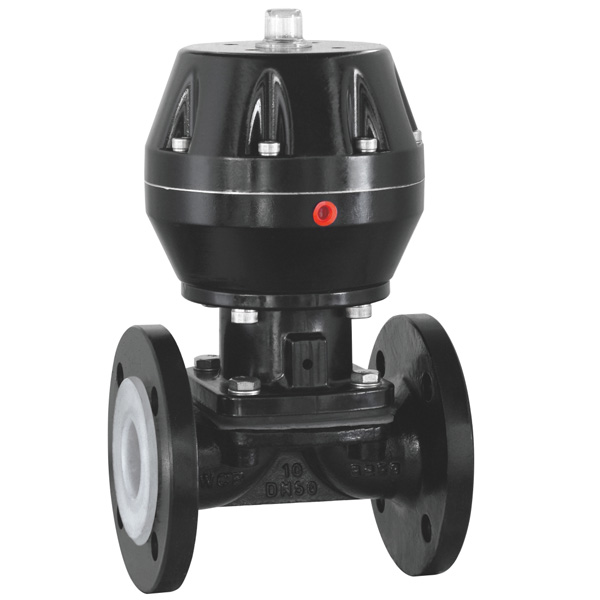Choosing the right control option for your diaphragm valve is crucial to achieving efficient and reliable system performance. Diaphragm valves are a versatile solution used across industries such as pharmaceuticals, food processing, and chemical production. From manual operation to advanced automation, understanding the differences between control mechanisms like sanitary diaphragm valves, pneumatic diaphragm valve systems, and electric-actuated models is essential. Whether you’re managing simple flow control or require the flexibility of a 3 way diaphragm valve, this guide will help you identify the best option for your specific application.
Introduction Diaphragm Valve
Selecting the right control option for a diaphragm valve is essential for optimizing system performance across industries. Diaphragm valve manufacturers offer solutions tailored to diverse needs, including air actuated diaphragm valve systems for fast, reliable responses in automated settings. The integration of components like a diaphragm valve pneumatic actuator ensures precision and efficiency, making them ideal for applications in pharmaceuticals, food production, and chemical processing.
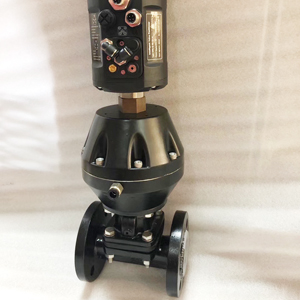
1. The Basics of Diaphragm Valves
What are diaphragm valves and how do they work?
Diaphragm valves are specialized flow control devices designed to regulate the movement of fluids, gases, or slurries in a wide range of applications. They function by using a flexible diaphragm, which presses against a firm seat to create a tight seal. This design allows for precise control, reduces the risk of leaks, and makes them ideal for processes requiring clean or sterile conditions, such as in pharmaceuticals or food production. Simple yet effective, diaphragm valves ensure reliable performance with minimal maintenance.
Key benefits of using diaphragm valves, including leak-tight sealing, durability, and low-maintenance operation.
Diaphragm valves offer significant advantages, including exceptional leak-tight sealing, making them ideal for preventing contamination in sensitive environments. Their robust construction ensures durability, enabling them to withstand harsh operating conditions. Additionally, their simple design reduces the need for frequent repairs, making them a low-maintenance solution for industries that prioritize efficiency and reliability.
Overview of industries that rely on diaphragm valves for precise flow control.
Diaphragm valves are critical for precise flow control in industries where accuracy and reliability are paramount. The pharmaceutical sector relies on them for sterile, contamination-free processes, while the food and beverage industry values their ability to maintain hygiene standards. Chemical processing also depends on diaphragm valves for handling aggressive or hazardous materials safely, showcasing their versatility across demanding applications.
2. Manual Options for Diaphragm Valves
Understanding manual diaphragm valves and their straightforward operation.
Manual diaphragm valves are a simple yet effective solution for basic flow control tasks. Their straightforward operation relies on a handwheel to manually position the diaphragm, offering precise regulation without the need for additional power sources. Cost-effective and reliable, these valves are ideal for applications where automation is unnecessary, providing durability and ease of use in a wide range of environments.
Where manual control excels (e.g., small-scale operations or environments not requiring automation).
Small-scale operations
Manual diaphragm valves are a practical choice for small-scale operations due to their cost-effectiveness and straightforward functionality. These valves are easy to operate, making them ideal for systems with low-pressure requirements or simpler flow control needs. Their reliable design allows operators to manage processes manually without the need for automation, providing an efficient solution for operations with limited budgets or minimal complexity.
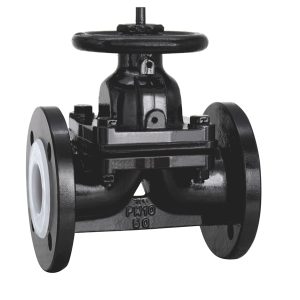
Environments not requiring automation
Manual diaphragm valves are well-suited for environments where automation isn’t necessary, delivering practicality and cost-effectiveness. Their straightforward design ensures reliable performance, making them ideal for systems focused on basic flow control without the need for complex infrastructure or power sources. These valves allow operators to manage operations with confidence and precision, offering an efficient solution in scenarios where simplicity and budget considerations take priority.
Maintenance considerations for manual mechanisms in sanitary diaphragm valves.
Proper maintenance of manual mechanisms in sanitary diaphragm valves is crucial for ensuring consistent hygiene and peak performance. Regular inspections help detect wear or damage to key components like the diaphragm and seals, preventing potential failures. Routine cleaning is essential to eliminate buildup and maintain sanitary standards, while ensuring the integrity of all parts extends the valve’s lifespan and upholds reliable operation in sensitive applications.
3. Introduction to Pneumatic Diaphragm Valve Systems
Defining pneumatic diaphragm valves and their reliance on compressed air for actuation.
Pneumatic diaphragm valves are advanced flow control devices that use compressed air for actuation, eliminating the need for manual operation. The application of air pressure moves the diaphragm to regulate or block flow, enabling precise and automated control. Renowned for their efficiency, these valves are ideal for automated systems, offering reliability and performance in industries requiring seamless flow management.
Advantages of pneumatic control, such as faster response times and suitability for hazardous environments.
Pneumatic control systems offer unparalleled advantages, including faster response times that enhance operational efficiency in real-time applications. Their reliance on compressed air makes them inherently safe for hazardous environments, eliminating risks associated with electrical components. This adaptability, combined with precision and reliability, makes pneumatic diaphragm valves the preferred choice for demanding industries that require consistent performance under challenging conditions.
Discussion on the role of a diaphragm valve pneumatic actuator in automated systems.
A diaphragm valve pneumatic actuator is essential for automated systems, transforming compressed air into mechanical motion to regulate flow with precision. This key component eliminates the need for manual intervention, enabling seamless and automated control of fluid systems. By delivering consistent accuracy and reliability, pneumatic actuators play a crucial role in streamlining industrial processes, enhancing operational efficiency, and ensuring optimal performance across complex applications.
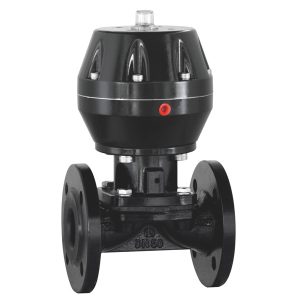
4. Exploring Air Actuated Diaphragm Valve Solutions
How air actuated diaphragm valves operate and their integration into system designs.
Air actuated diaphragm valves rely on air pressure to control the movement of the diaphragm, effectively regulating or halting flow without manual input. Their design allows seamless integration into automated systems, making them highly adaptable for diverse industrial setups. From precise flow management to compatibility with complex configurations, these valves contribute to enhanced efficiency and streamlined operations across a wide range of applications.
Applications where air actuated systems excel, such as high-purity processing in pharmaceuticals and food production.
Air actuated diaphragm valve systems excel in high-purity applications where hygiene, precision, and reliability are paramount. Industries like pharmaceuticals and food production rely on these valves for their ability to maintain sterile environments while delivering precise flow control. Their non-contaminating operation, coupled with robust performance under stringent conditions, ensures compliance with rigorous cleanliness standards, making them indispensable for critical processes.
Performance insights and considerations when sourcing from diaphragm valve manufacturers.
When sourcing diaphragm valves, performance hinges on selecting manufacturers known for their stringent quality standards and proven expertise. Key considerations include ensuring material compatibility with the operating environment to prevent corrosion or contamination and evaluating the manufacturer’s certifications and track record for reliability. A trusted provider not only delivers high-performance valves but also offers technical support and customization, ensuring seamless integration and long-term efficiency in demanding industrial systems.
5. Decoding Electric Control for Diaphragm Valves
Electric actuation in diaphragm valves and how it compares to pneumatic options.
Electric actuation in diaphragm valves offers exceptional precision and energy efficiency, making it an ideal solution for applications requiring fine-tuned control and low operating costs. Unlike pneumatic systems, which excel in speed and are inherently safe for hazardous environments, electric actuators provide consistent and programmable control with minimal maintenance. While pneumatic options are favored for high-speed, heavy-duty tasks, electric actuators stand out in environmentally conscious setups and processes demanding precise adjustments, underscoring their adaptability and growing role in modern industrial operations.
Advantages including precise control, energy efficiency, and remote operation.
Electric control in diaphragm valves delivers precise control, unmatched energy efficiency, and convenient remote operation, revolutionizing industrial system performance. These features enable fine adjustments, reduce energy consumption, and allow operators to monitor and manage processes with ease from a distance. This level of control not only enhances accuracy across complex applications but also optimizes operational workflows, making electric actuation a forward-thinking choice for efficient and streamlined industrial systems.
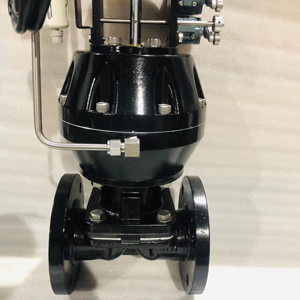
Best use cases for electric systems in advanced operations involving a 3 way diaphragm valve.
Electric systems in 3-way diaphragm valves excel in advanced operations requiring precision, automation, and versatile flow control. They are ideal for processes demanding accurate routing of fluids or gases, such as in chemical dosing, water treatment, and biotech manufacturing. The ability to program and remotely manage these valves ensures seamless switching between flow paths, reducing downtime and enhancing system efficiency. These features make them indispensable for complex applications where multi-directional flow control is essential.
6. Application Spotlight: Choosing the Right Diaphragm Valve
Factors to consider when selecting between manual, pneumatic, and electric control mechanisms.
Selecting the right control mechanism for diaphragm valves—manual, pneumatic, or electric—requires careful evaluation of application requirements, cost, and operational complexity. Manual options are straightforward and cost-effective, suited for systems with minimal adjustment needs. Pneumatic controls provide rapid, reliable operation, especially in hazardous or high-speed environments, while electric mechanisms excel in precision, programmability, and remote operation. Balancing these factors ensures optimal performance and efficiency tailored to your system’s demands.
Specific recommendations for sanitary diaphragm valves used in hygienic and cleanroom environments.
Sanitary diaphragm valves designed for hygienic and cleanroom environments must prioritize high-grade material compatibility, such as FDA-approved or USP-compliant options, for safe interaction with sensitive media. Features like crevice-free designs and smooth surfaces ensure ease of cleaning, reducing the risk of contamination. Compliance with industry standards, including ASME BPE or EHEDG guidelines, is essential to meet stringent regulatory requirements. These valves deliver optimal performance in maintaining sterility and integrity in critical applications like pharmaceutical processing, biotechnology, and food production.
Insights from leading diaphragm valve manufacturers on trends and innovations.
Leading diaphragm valve manufacturers are driving innovation with advancements in smart valve technology, featuring integrated sensors for real-time performance monitoring and predictive maintenance. Enhanced materials, including corrosion-resistant alloys and elastomers, are improving durability and compatibility with demanding media. Additionally, sustainability-focused designs, such as energy-efficient actuation and longer service lifespans, are aligning with global efforts to reduce environmental impact. These trends reflect the industry’s commitment to improving operational efficiency and meeting the evolving needs of modern applications.
7. Custom Solutions with 3 Way Diaphragm Valves
Advantages of 3 way diaphragm valves in complex flow distribution systems.
3-way diaphragm valves offer significant advantages in complex flow distribution systems by providing seamless multi-directional flow control, which streamlines routing between multiple pipelines. Their compact design enhances space efficiency, making them ideal for installations with limited room. Additionally, these valves deliver exceptional operational flexibility, allowing rapid switching and customization of flow paths to adapt to varying process demands. This combination of features makes them a reliable choice for optimizing intricate fluid management systems.
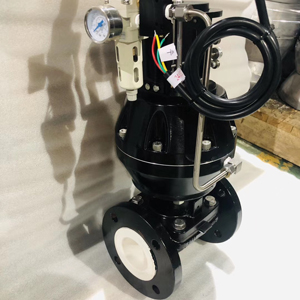
Examples of industries leveraging these designs for improved operational efficiency.
Industries such as pharmaceuticals, water treatment, and food processing are leveraging 3-way diaphragm valve designs to boost operational efficiency. Pharmaceutical facilities benefit from precise multi-directional flow control for sterile and contamination-free processes. Water treatment plants rely on their ability to handle variable flow paths, simplifying system configurations and reducing downtime. Meanwhile, in food processing, these valves enhance flexibility and hygiene compliance by enabling efficient flow distribution and easy cleaning. Their adaptability makes them indispensable across these demanding applications.
Tips for optimizing performance when using multiple valve configurations.
To optimize performance when using multiple valve configurations, ensure proper alignment during installation to prevent leaks and maintain precise flow control. Regular maintenance, including inspecting seals and cleaning components, is essential to avoid wear-related inefficiencies. Additionally, integrating automation technologies, such as programmable controllers, can enhance coordination between valves, streamline operations, and reduce response times. These practices help maximize efficiency and extend system longevity in complex setups.
FAQ Diaphragm Valve
Q1: What are the key differences between manual and pneumatic diaphragm valves in terms of operation?
A1: Manual diaphragm valves are operated by hand, providing simple and cost-effective control over flow. They are ideal for applications requiring minimal adjustments. On the other hand, a pneumatic diaphragm valve uses compressed air to automate flow control, offering faster response times and the ability to handle complex operations remotely. This makes pneumatic models especially useful in industrial systems with high precision needs, like those utilizing sanitary diaphragm valves for sterile processes.
Q2: How do you choose the right actuator type for a 3 way diaphragm valve?
A2: Selecting the actuator type for a 3 way diaphragm valve depends on your system’s needs. For straightforward flow paths in smaller setups, manual controls may suffice. If your application involves frequent flow path changes or requires rapid switching, a pneumatic system is a more efficient choice. For advanced automation and integrated monitoring, electric actuators provide superior control, crucial in industries like water treatment and food processing.
Q3: Why are sanitary diaphragm valves typically paired with automated control options like pneumatic or electric systems?
A3: Sanitary diaphragm valves are designed for hygiene-critical environments such as biopharmaceutical production and food processing. Automated control options, such as pneumatic diaphragm valves, ensure precision and reduce contamination risks by eliminating direct manual interaction. Electric systems, with their programmability and monitoring capabilities, further enhance process control and help maintain strict sanitary standards.

Conclusion Diaphragm Valve
Understanding the control options for diaphragm valves—manual, pneumatic, and electric—empowers industries to choose systems that align with their operational demands. Diaphragm valve manufacturers continue to offer innovative solutions, such as the air actuated diaphragm valve, which is prized for its ability to deliver precision and efficiency in automated setups. Coupled with a diaphragm valve pneumatic actuator, these systems enhance performance in diverse applications, from sanitary processing to complex industrial tasks. By selecting the right configuration, businesses can optimize their processes while maintaining reliability and control.

